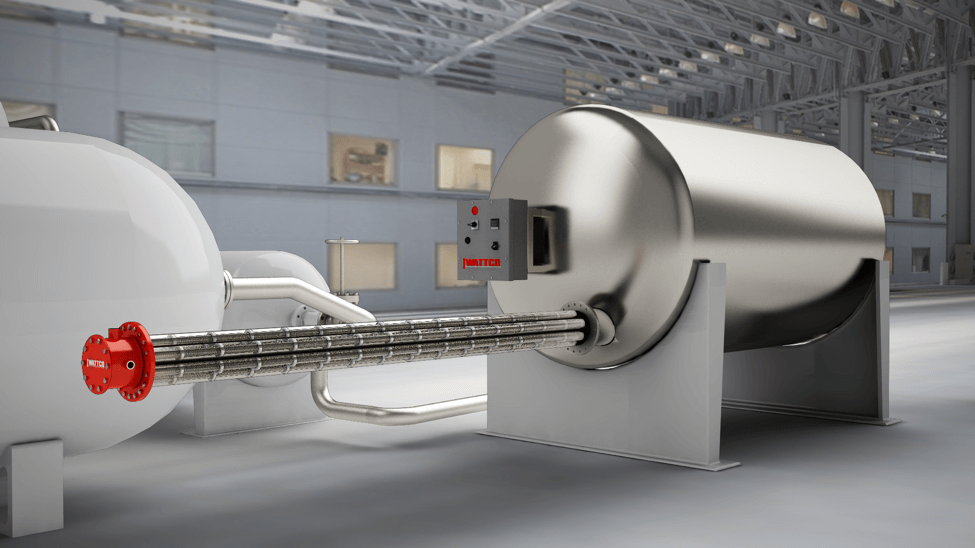Retrofitting Equipment With Electric Immersion Heaters: A Guide
Electric power is in high demand for industrial heating. It’s more efficient and cost-effective than fossil fuel heaters. When buying new immersion heaters, companies are turning to electric. But if systems and processes are already in place, replacing the heater can be an expensive option.
Often, it’s less expensive to retrofit than to replace. Some countries provide retrofit programs that incentivize energy efficient retrofitting. These programs make retrofitting equipment more affordable and help you see a return on your new, efficient, immersion heater sooner.
This guide is a brief overview of how to retrofit your equipment with electric immersion heaters.
Step 1: Planning Ahead
A successful retrofit starts with planning. Identify your biggest areas of opportunity, then establish clear goals and timelines.
The biggest opportunities are usually found in the least efficient processes. Equipment that needs frequent repair, requires a high energy output, and/or costs more to run is having a greater impact on your profitability.
As well, the most effective equipment to retrofit for electric is generally the equipment that is used most. For example, a tank heater for freeze protection doesn’t have to run as often in a climate with the average temperature above freezing. So retrofitting the tank heater would not have as great of an impact as on equipment that runs consistently. The more energy a process requires, the greater the benefit of more energy-efficient immersion heating.
Another area of opportunity is government incentives. Many governments incentivize businesses that upgrade to more energy-efficient buildings and processes. Retrofitting is often included. Check to see what local and federal programs are available to you.
Once a decision is made on which equipment to upgrade, it’s important to establish the goals of the retrofit. Is it a temporary measure, transitioning towards eventually replacing the old systems and equipment entirely, or is it more permanent? Is there a specific outcome desired: eg. better efficiency, lower operating costs, lower environmental impact?
The third step in planning is then to establish a clear timeline. This is especially important if retrofitting multiple systems with electric industrial heaters. For industries affected by seasonality, the best option is to schedule the retrofits for natural lulls. This has the lowest impact on your production.
Otherwise, it may be best to stagger the retrofitting process changing one immersion heater at a time. This allows companies to keep more processes running, minimizing the impact of downtime.
Step 2: Compliance
This is a crucial step for retrofitting. Compliance is important both for meeting local regulations and for ensuring the immersion heater achieves optimal performance.
To comply with local regulations it’s important to ensure any new equipment has all the necessary safety features. Retrofit industrial heaters must have any necessary safety features, such as temperature sensors, level sensors, shutoff switches, and properly housed control panels.
The next type of compliance is making sure the new electric immersion heater works properly with the existing equipment. This may require consulting with an industrial heater manufacturer. They can advise on the best heating options, as well as any additional connections or equipment that are required to adapt your system.
Step 3: Picking An Electric Immersion Heater
Electric immersion heaters are the optimal choice for retrofitting industrial heating equipment. Electricity is the most efficient power source for heating. Alternatives, like fossil fuel, waste a lot of fuel during the heating process. In a large operation wasted energy comes with a price tag. Electricity can result in big savings in operating costs.
Electric heaters are also more efficient in their ability to heat. They can reach high temperatures quickly and safely. That makes them extremely responsive and requires less operating time. This efficiency makes operations more profitable.
There are four main types of electric immersion heaters:
1. Circulation Heaters (In-line)
Circulation heaters, also known as in-line heaters, are used in a number of applications. They provide heat, maintaining the target viscosity of fluid pumping through a circuit of pipes. Electric circulation heaters come in a variety of materials and watt densities to match specific mediums.
2. Flanged Heaters
Flanged heaters are among our most popular immersion heaters. They use multiple hairpin elements and are installed directly into tanks or vessels for direct heating. They are capable of providing fast, even heating in large containers.
3. Screw Plug Heaters
Screw plug heaters are screwed directly into tanks or containers. They operate similarly to flanged heaters. In smaller vessels, they are the most efficient heating option.
4. Over-The-Side Heaters
Over-the-side (OTS) heaters are a great option for open tanks. They are a practical and economical heating solution that can be skid-mounted for use in multiple tanks. They sit over the side of the tank, making installation easy.
When Is It Better To Replace Then Retrofit?
Although retrofitting equipment is often lower cost than replacing, it’s not always the best solution. An example of this is when the equipment is in bad condition. The added value of using electric power is lost on a heater that will need to be replaced in the near future. In this case, it’s best to replace now.
As well, far outdated systems may require too many adaptations to retrofit with modern equipment. This can lead to systems that are inefficient, or too complicated. An overcomplicated system is more difficult to maintain and repair. It may also require a specialist to fix, which can mean longer down times.
Updating Industrial Heating Solutions With Wattco
Whether you are retrofitting, replacing or upgrading an existing heating system WATTCO can help. Contact us today for help selecting the right electric immersion heater and configuration for your application.

